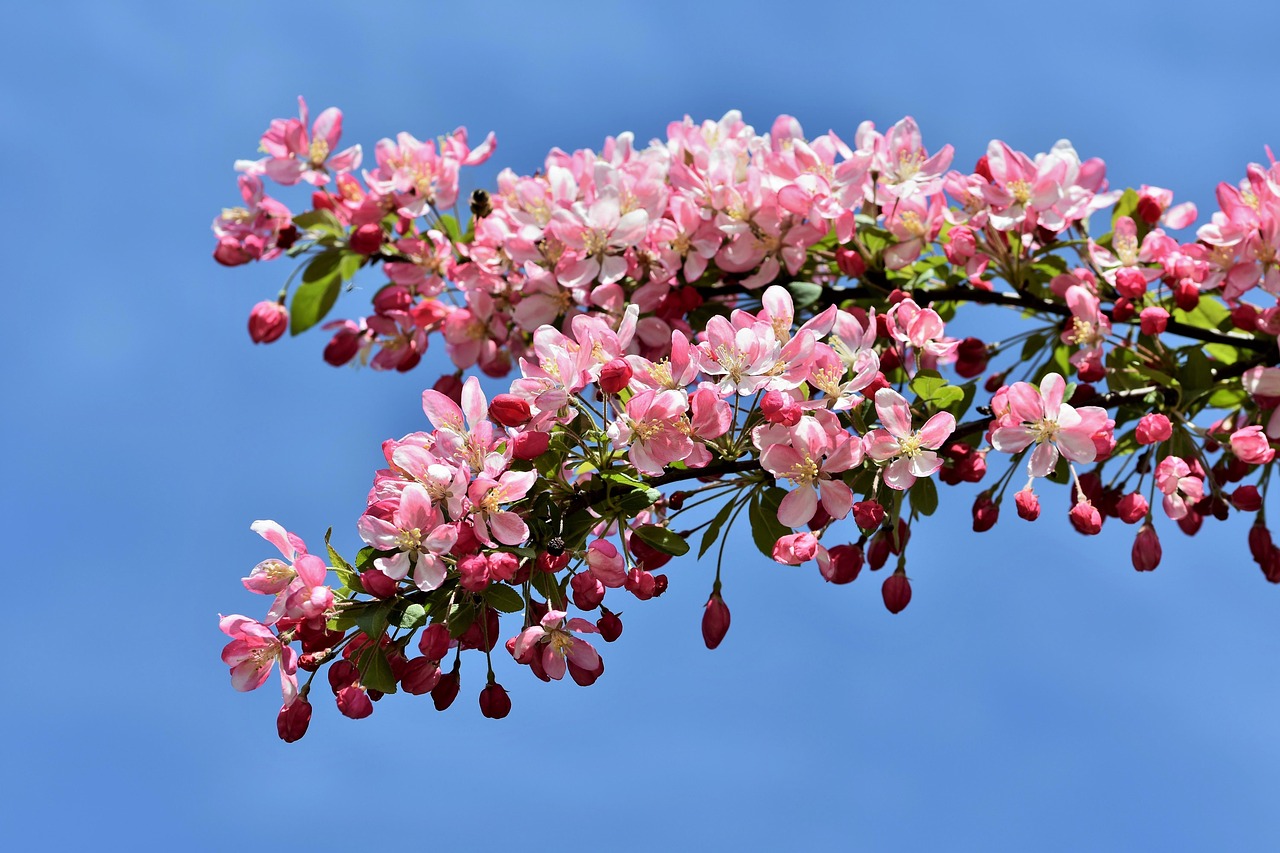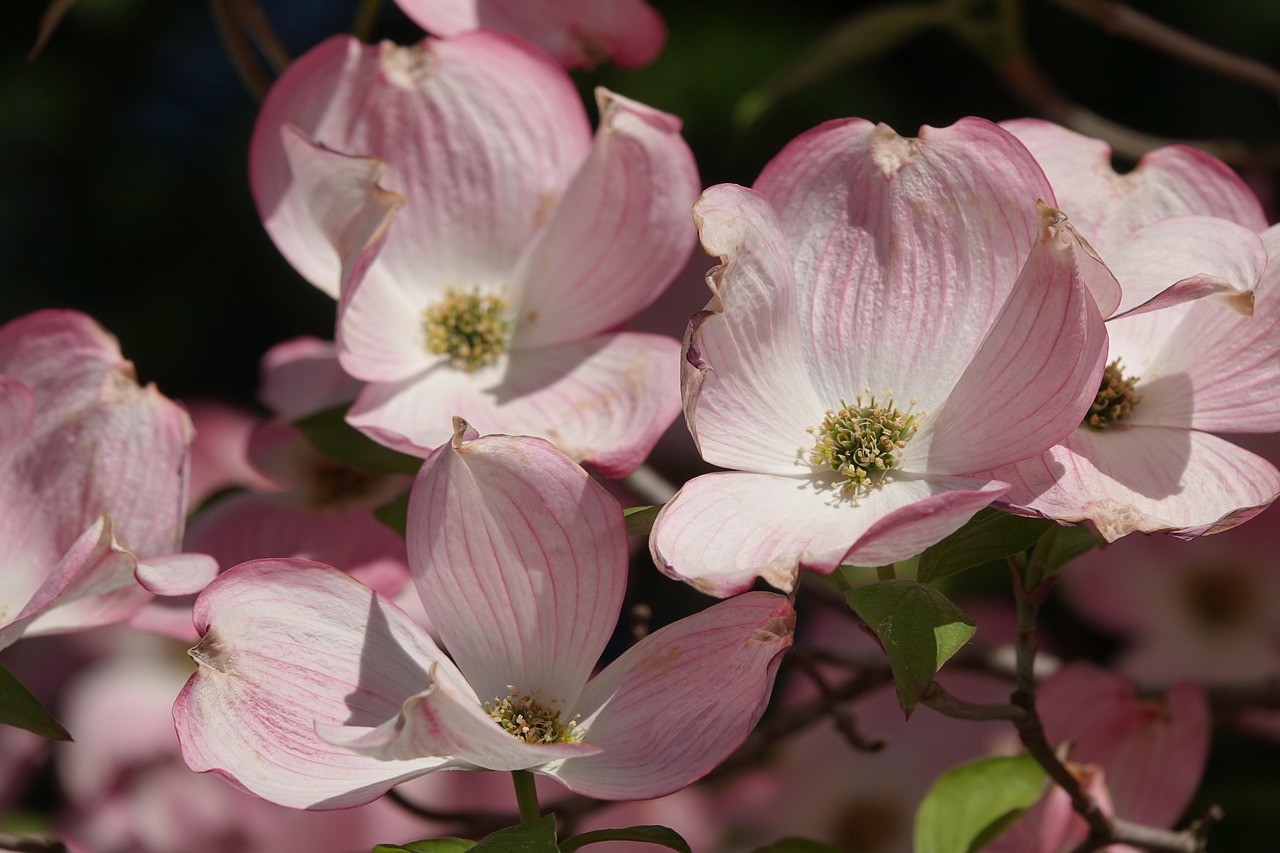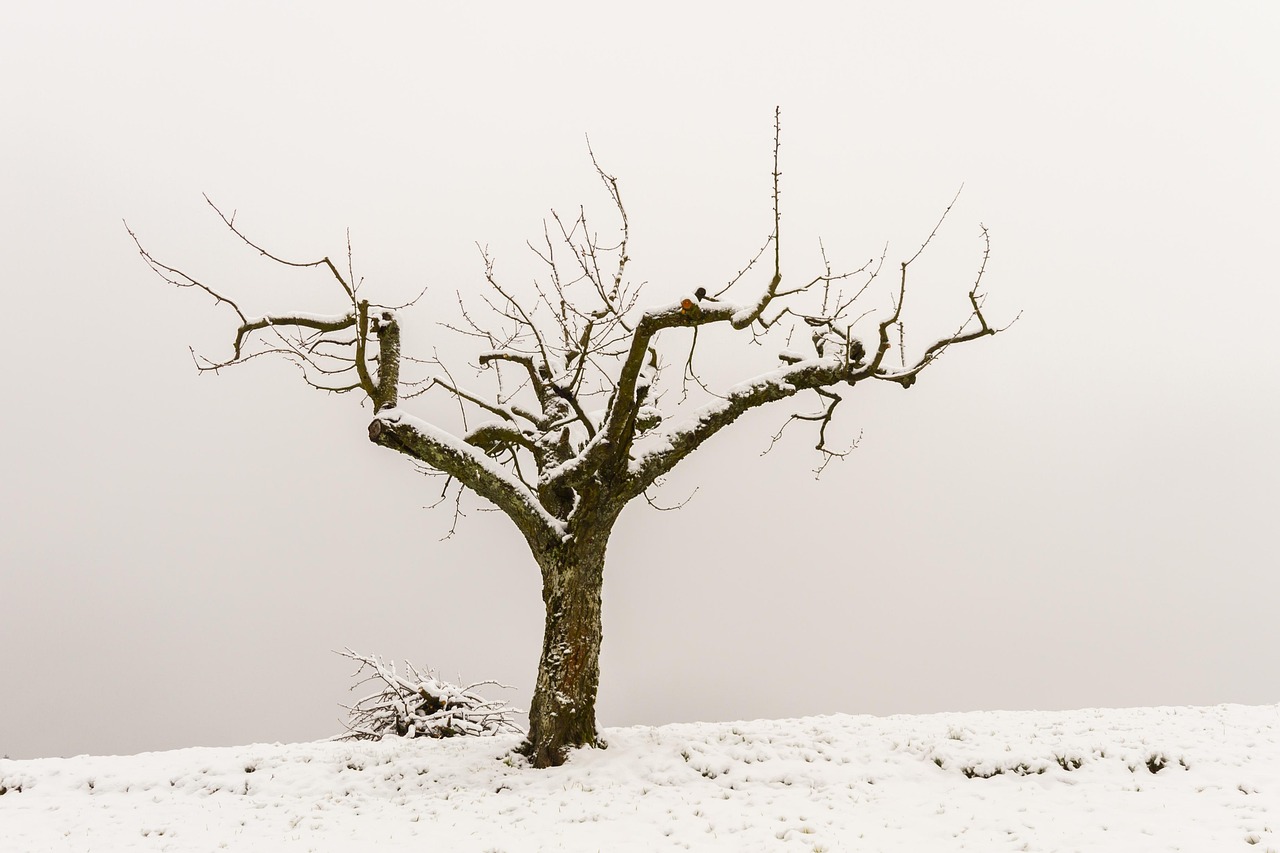Crabapple tree pruning is essential for creating well-defined garden pathways. Proper pruning enhances the tree’s shape, promotes healthy growth, and ensures the pathways remain accessible and visually appealing. A well-pruned crabapple can frame your garden beautifully while allowing for easy navigation.
Crabapple trees, with their stunning flowers and vibrant fruit, are a popular choice for landscaping and garden pathways. These trees provide aesthetic value throughout the seasons, from spring blooms to autumn foliage. However, without proper pruning, crabapple trees can become overgrown, obstructing pathways and diminishing their beauty. Regular maintenance through pruning not only helps in shaping the tree but also contributes to its overall health.

There are several reasons to prune crabapple trees, particularly when considering garden pathways. Pruning aids in controlling the size of the tree, ensuring it does not overwhelm the surrounding area. It also helps in removing dead or diseased branches, which can pose hazards to both the tree and its surroundings. Furthermore, strategic pruning can enhance air circulation and sunlight penetration, promoting healthier growth.
Understanding the Anatomy of a Crabapple Tree
Before diving into the pruning process, it is essential to understand the basic structure of a crabapple tree. Knowing how a crabapple tree grows can guide how and when to prune effectively. The critical components of a crabapple tree include:
- Branches: Main structural components that support leaves and fruit.
- Twigs: Younger extensions of branches that develop leaves and flowers.
- Bark: The protective outer layer that can show signs of disease or damage.
- Canopy: The upper layer of foliage that provides shade and shelter.
- Root system: Anchor and nutrient absorption point for the tree.
Understanding these parts will help you make informed decisions during the pruning process. Each section requires different considerations when pruning to maintain the tree’s health and appearance.

The Best Time for Pruning Crabapple Trees
Timing is crucial when it comes to pruning crabapple trees. The best time to prune is either late winter or early spring before new growth begins. This timing allows you to see the tree’s structure clearly without leaves obstructing your view. Additionally, pruning during dormancy reduces stress on the tree and minimizes the risk of disease.
Here is a simple table outlining the best times and methods for pruning:
| Season | Task | Notes |
|---|---|---|
| Late Winter | Structural Pruning | Focus on removing dead or crossing branches. |
| Early Spring | Shaping | Shape the canopy for better sunlight exposure. |
| Summer | Maintenance | Trim any excessive growth or suckers. |
| Autumn | No Pruning | Avoid pruning as it can stress the tree before winter. |
Tools Needed for Pruning Crabapple Trees
Having the right tools at your disposal is vital for effective pruning. Using sharp and clean tools ensures clean cuts, promoting healing and reducing the risk of disease. Here are some essential tools for pruning crabapple trees:

- Pruning Shears: Ideal for small branches and twigs.
- Loppers: Useful for larger branches that are too thick for shears.
- Saw: A small hand saw is necessary for cutting larger limbs.
- Gloves: Protect your hands from cuts and scrapes.
- Ladder: For reaching higher branches safely.
Before you start pruning, ensure that all tools are cleaned and sterilized. This step helps prevent any transfer of diseases between plants.
Basic Pruning Techniques for Crabapple Trees
When you begin pruning your crabapple tree, there are several techniques to keep in mind. These methods will help you shape the tree effectively while promoting healthy growth. Here are some fundamental techniques:
- Crown Thinning: This technique involves selectively removing branches to increase light penetration and air circulation within the tree.
- Crown Raising: Remove lower branches to allow for easier movement underneath the tree and to create a clear pathway.
- Crown Reduction: Reduce the size of the tree’s canopy by trimming back branches while maintaining its natural shape.
- Deadheading: Remove spent flowers to encourage more blooms and prevent unwanted seed formation.
Each of these techniques serves specific purposes in managing the growth and appearance of your crabapple tree, ensuring it enhances your garden pathways without becoming an obstacle.

Your Next Steps in Crabapple Tree Pruning
Now that you understand the basics of crabapple tree pruning, consider assessing your trees before starting. Take note of their size, shape, and any areas that may need attention. With the right approach, you can create beautiful garden pathways framed by healthy, well-pruned crabapple trees that add charm to your landscape.
Identifying What to Prune
Understanding what to prune is crucial for effective crabapple tree maintenance. Not all branches require cutting, and knowing which parts to focus on can make a significant difference in the overall health of the tree and the aesthetic of your garden pathways. Here are the key aspects to consider when deciding what to prune:
- Dead or Diseased Branches: These should be removed immediately to prevent further decay and disease spread.
- Crossing Branches: Remove branches that cross each other as they can rub against one another, causing wounds that invite pests and diseases.
- Weak or Spindly Growth: Thin out any weak branches that do not contribute to the overall structure of the tree.
- Water Sprouts: These are vigorous shoots that grow upward from the main branches. They should be pruned to maintain the tree’s shape.
- Suckers: These grow from the base of the tree and can sap energy from the main structure. Remove them to redirect nutrients to the main branches.
Pruning Techniques for Specific Outcomes
Different pruning techniques can achieve specific results. Understanding these techniques will help you make informed decisions based on your goals for the crabapple tree in your garden pathway.
Crown Thinning for Light and Air Circulation
Crown thinning is often performed to improve air circulation and light penetration within the tree’s canopy. This method enhances growth and reduces the risk of fungal infections. To thin the crown:
- Selectively remove smaller branches that crowd larger ones.
- Aim for a balanced look, ensuring that light can reach all parts of the tree.
- Maintain the natural shape of the tree while removing about 20-30% of the interior branches.
Crown Raising for Pathway Clearance
If your crabapple tree’s lower branches obstruct pathways, crown raising is an effective technique. This process creates clear vertical space under the tree, allowing for easier movement. Follow these steps:
- Identify branches that are too low and hinder movement.
- Cut these branches back to their point of origin or to a lateral branch that can sustain growth.
- Aim to raise the crown gradually over several seasons instead of doing it all at once.
Crown Reduction for Size Management
Crown reduction is necessary when a crabapple tree grows too large for its intended space. This technique helps maintain a manageable size while preserving the tree’s natural form. To effectively reduce the crown:
- Select branches that are excessively long and out of proportion with the rest of the tree.
- Make cuts just above a lateral branch or bud to encourage new growth in a desirable direction.
- Avoid cutting back too much at once; reduce by no more than one-third of the total height in a single season.
Aftercare Post-Pruning
After completing pruning, providing proper care is vital for recovery and growth. This care ensures that your crabapple tree thrives and continues to enhance your garden pathways. Consider these aftercare tips:
- Watering: Ensure the tree receives adequate water, particularly during dry spells. Deep watering encourages root development.
- Mulching: Apply mulch around the base of the tree. This retains moisture, suppresses weeds, and regulates soil temperature.
- Fertilizing: Use a balanced fertilizer in early spring to support new growth. Avoid over-fertilization, which can lead to excessive foliage at the expense of fruit production.
- Pest Monitoring: Keep an eye out for pests or diseases following pruning. Early detection helps address issues before they escalate.
Common Mistakes to Avoid When Pruning
Even experienced gardeners can make mistakes while pruning crabapple trees. Being aware of common pitfalls can help you achieve better results. Here are some mistakes to avoid:
- Pruning at the Wrong Time: Pruning during late fall or mid-summer can stress the tree. Stick to late winter or early spring.
- Over-Pruning: Removing too many branches at once can shock the tree. Aim for moderation with each pruning session.
- Ignoring Tree Structure: Pruning without considering the natural shape can lead to an unattractive appearance. Always prune with shape in mind.
- Using Dull Tools: Dull tools can tear rather than cut branches cleanly, increasing recovery time and risk of disease. Keep tools sharp and well-maintained.
Enhancing Garden Pathways with Crabapple Trees
The strategic placement of crabapple trees along garden pathways not only creates visual appeal but also provides practical benefits. As you prune and maintain these trees, consider how their placement enhances your outdoor space:
- Aesthetic Appeal: Well-pruned crabapple trees can frame pathways beautifully, providing color and texture throughout different seasons.
- Shade Creation: Properly placed trees offer shade, making pathways more comfortable during hot days.
- Pollen and Nectar Sources: Crabapple trees attract pollinators, contributing to a healthier garden ecosystem.
- Wildlife Habitat: These trees provide shelter and food for various wildlife, enriching your garden’s biodiversity.
By understanding pruning techniques, timing, aftercare, and common mistakes, you will be well-prepared to cultivate healthy crabapple trees that enhance your garden pathways effectively.
Choosing the Right Crabapple Tree Varieties
Selecting the appropriate crabapple tree variety is essential for achieving the desired aesthetics and functionality in your garden pathways. Different crabapple varieties have unique characteristics, including size, color, and resilience. Here is a look at some popular varieties that you might consider:
| Variety | Height | Flower Color | Fruit Size | Notable Features |
|---|---|---|---|---|
| Malus ‘Prairifire’ | 15-20 ft | Pink | Small | Resistant to diseases, beautiful fall foliage. |
| Malus ‘Snowdrift’ | 15-25 ft | White | Medium | Showy flowers, produces abundant fruit. |
| Malus ‘Dolgo’ | 15-20 ft | White with pink buds | Medium | Excellent for jelly and preserves, attractive bark. |
| Malus ‘Evereste’ | 10-15 ft | Pale Pink | Small | Beautiful fruit, great for small spaces. |
| Malus ‘Royal Raindrops’ | 15-20 ft | Pink | Small | Unique cut leaf foliage, stunning in spring. |
When choosing a variety, consider the climate in your area, as well as the size of the space where you plan to plant. Some varieties have a more compact growth habit, making them ideal for smaller gardens or pathways.
Caring for Crabapple Trees Beyond Pruning
While pruning is vital, ongoing care is equally important for the health of your crabapple trees. A comprehensive care routine ensures that your trees flourish and continue to enhance your garden pathways. Here are essential care practices to follow:
Watering Practices
Proper watering is crucial, especially during dry spells. Newly planted crabapple trees require more frequent watering to establish a robust root system. Here are some best practices:
- Deep Watering: Water deeply but infrequently to encourage deep root growth.
- Avoid Overwatering: Ensure good drainage to prevent root rot; the soil should not remain soggy.
- Mulch Application: Apply a layer of mulch around the base to retain moisture and suppress weeds.
Pest and Disease Management
Crabapple trees can be susceptible to various pests and diseases, which can affect their health and appearance. Regular monitoring can help catch issues early. Here are common pests and diseases to watch for:
- Apple Scab: A fungal disease causing dark spots on leaves. Use fungicides as needed and ensure good air circulation.
- Caterpillars: These can defoliate trees quickly. Hand-pick or use organic insecticides if necessary.
- Aphids: Small insects that suck sap from leaves. Introduce beneficial insects like ladybugs or apply insecticidal soap.
- Fire Blight: A bacterial disease leading to wilting and blackened branches. Prune infected areas immediately.
The Role of Fertilization in Tree Health
A balanced fertilization regimen helps maintain the vigor of your crabapple trees. Fertilizing supports growth, flowering, and fruiting. Here’s how to approach fertilization:
- Timing: Fertilize in early spring before new growth begins.
- Selecting Fertilizer: Use a balanced fertilizer, such as a 10-10-10 blend, to provide essential nutrients.
- Avoid Over-Fertilization: Too much fertilizer can lead to excessive foliage at the expense of blooms and fruit production.
- Soil Testing: Conduct a soil test to determine nutrient deficiencies before applying fertilizers.
Designing Pathways with Crabapple Trees
The integration of crabapple trees into your garden pathways goes beyond mere aesthetics; it involves thoughtful design principles. Here are some design ideas to consider:
Create Visual Balance
When planting crabapple trees along pathways, aim for visual balance with spacing and height. Consider the following tips:
- Even Spacing: Maintain consistent spacing between trees to create a harmonious look.
- Vary Tree Heights: Mix taller and shorter varieties to add depth to your landscape.
- Create Focal Points: Use one or two standout varieties as focal points along the pathway.
Add Companion Plants
Energize the area around crabapple trees by incorporating companion plants that complement their beauty. Consider these options:
- Ground Covers: Low-growing plants such as creeping thyme or sedum can add texture and color.
- Blooming Perennials: Flowers like daylilies or coneflowers can provide seasonal blooms that enhance the overall landscape.
- Bushes or Shrubs: Consider planting flowering shrubs nearby for added layers of interest.
Create Defined Edges
A well-defined pathway enhances the visual appeal of crabapple trees while guiding foot traffic effectively. Use materials such as:
- Pavers or Flagstones: These can create a solid surface around trees while providing structure to the pathway.
- Narrow Gravel Paths: Gravel provides a natural look while allowing for easy maintenance around tree roots.
- Lattice or Fencing: Consider low fencing or lattice to mark boundaries without obstructing views.
By carefully selecting tree varieties, providing ongoing care, and designing pathways thoughtfully, you can create an inviting landscape that showcases the beauty of crabapple trees while enhancing accessibility and enjoyment of your garden.
Enhancing the Seasonal Appeal of Crabapple Trees
One of the most captivating aspects of crabapple trees is their ability to provide visual interest throughout the seasons. By planning for seasonal changes, you can enhance your garden pathways even further. Here are some ways to celebrate the seasonal beauty of crabapple trees:
Spring Blooms
In spring, crabapple trees burst into a profusion of flowers. The vibrant blossoms can range from white to deep pink, attracting pollinators like bees and butterflies. To maximize this display:
- Choose Early-Blooming Varieties: Plant a mix of early and late-blooming varieties to extend the flowering period.
- Positioning: Place trees near seating areas or pathways to fully appreciate their beauty during bloom time.
- Companion Planting: Incorporate spring-blooming perennials like tulips or daffodils around the base for a unified spring display.
Summer Foliage
During the summer, the lush green foliage of crabapple trees provides shade and a refreshing backdrop for garden pathways. To enhance summer aesthetics:
- Layering Plants: Use lower-growing plants to create a layered effect, allowing the tree’s canopy to stand out against colorful flowers.
- Outdoor Seating Areas: Create shaded spots beneath the tree for relaxation and enjoyment of the garden space.
- Wildlife Observation: Position benches or chairs nearby for observing wildlife attracted to the tree.
Fall Foliage
As autumn approaches, crabapple trees begin to change colors, offering stunning displays of reds, oranges, and yellows. To make the most of this transformation:
- Highlight Fall Colors: Pair with plants that complement fall foliage, such as ornamental grasses that turn golden.
- Harvesting Fruits: The small fruits can be left on the tree for wildlife or harvested for use in preserves and jellies.
- Pathway Lighting: Consider adding landscape lighting to illuminate the tree and surrounding area at night, showcasing its fall beauty.
Winter Structure
Even in winter, crabapple trees provide structure and interest in the garden. Their bare branches can create beautiful silhouettes against the winter sky. To enhance winter appeal:
- Add Winter Interest: Decorate with natural elements like pinecones, berries, or bird feeders to attract wildlife.
- Snow Accents: The snow resting on branches can create picturesque scenes; strategically plant evergreen shrubs nearby for contrast.
- Winter Walkways: Ensure pathways remain clear and accessible during winter months for year-round enjoyment.
Final Thoughts
Pruning crabapple trees offers a myriad of benefits that go beyond simple maintenance. With proper techniques, timing, and care, you can enhance the beauty and functionality of your garden pathways. The thoughtful integration of these trees will create visually stunning landscapes that change beautifully with the seasons.
The selection of the right variety is essential for achieving your desired aesthetic while ensuring that your crabapple trees thrive within your landscape. Ongoing care practices—such as proper watering, pest management, and fertilization—play a vital role in maintaining the health of your trees.
The design of your pathways around these trees should consider not only aesthetic value but also practicality. Creating defined edges, incorporating companion plants, and planning for seasonal changes will ensure that your garden remains inviting throughout the year.
In conclusion, with careful planning and maintenance, crabapple trees can become a focal point in your garden pathway designs. They offer beauty in every season while providing shade and attracting wildlife. Embrace the potential of these magnificent trees to create a unique garden space that brings joy and tranquility to your outdoor experience.
